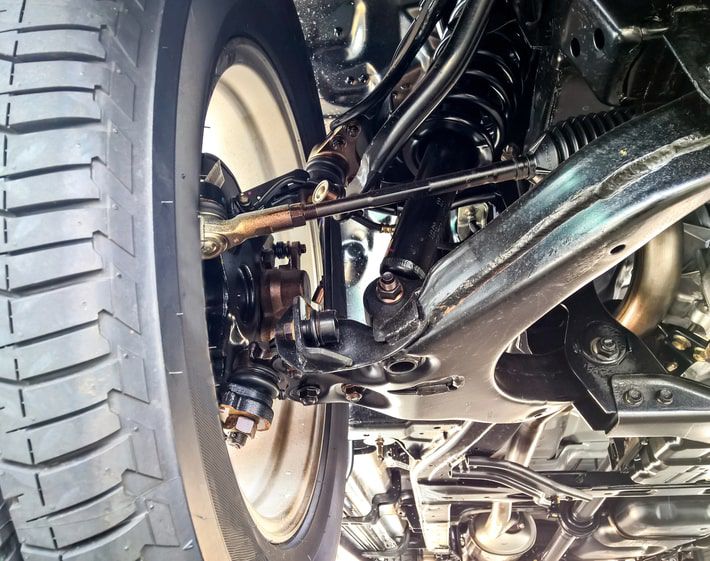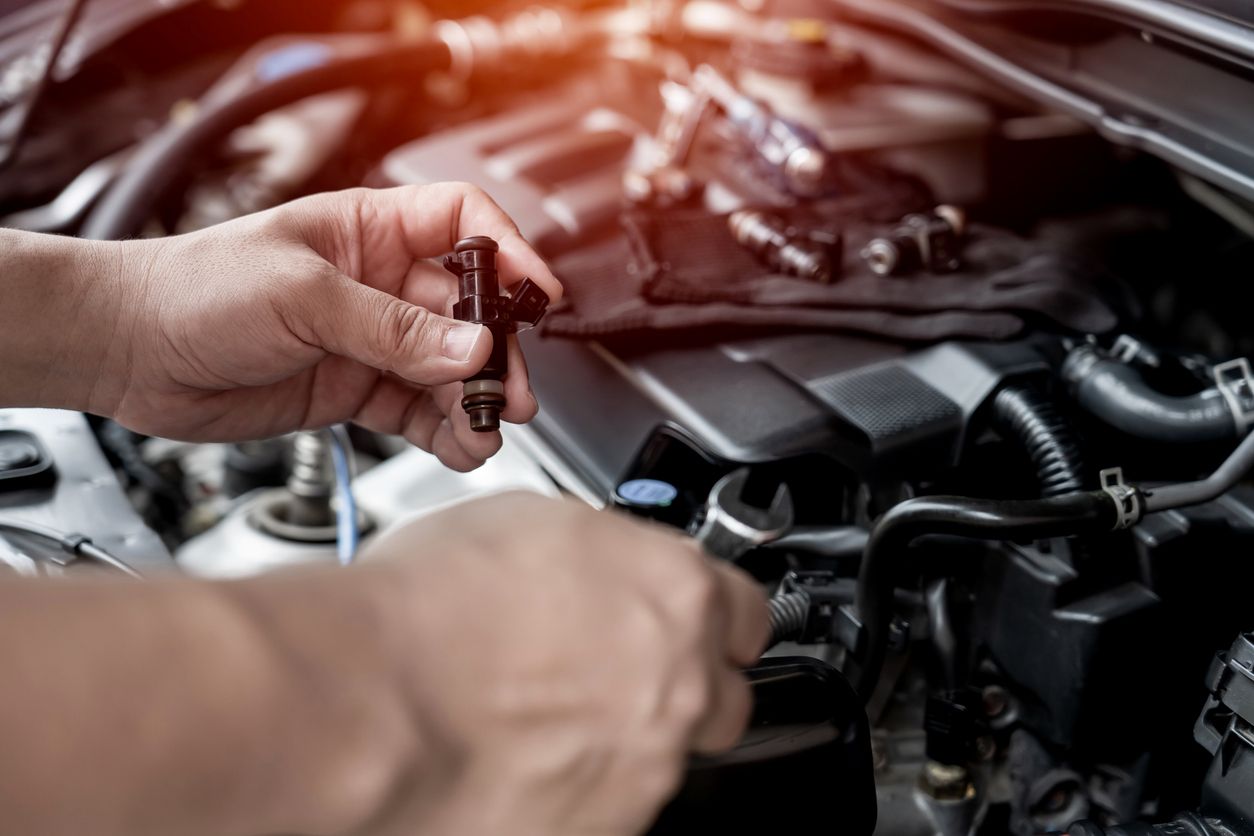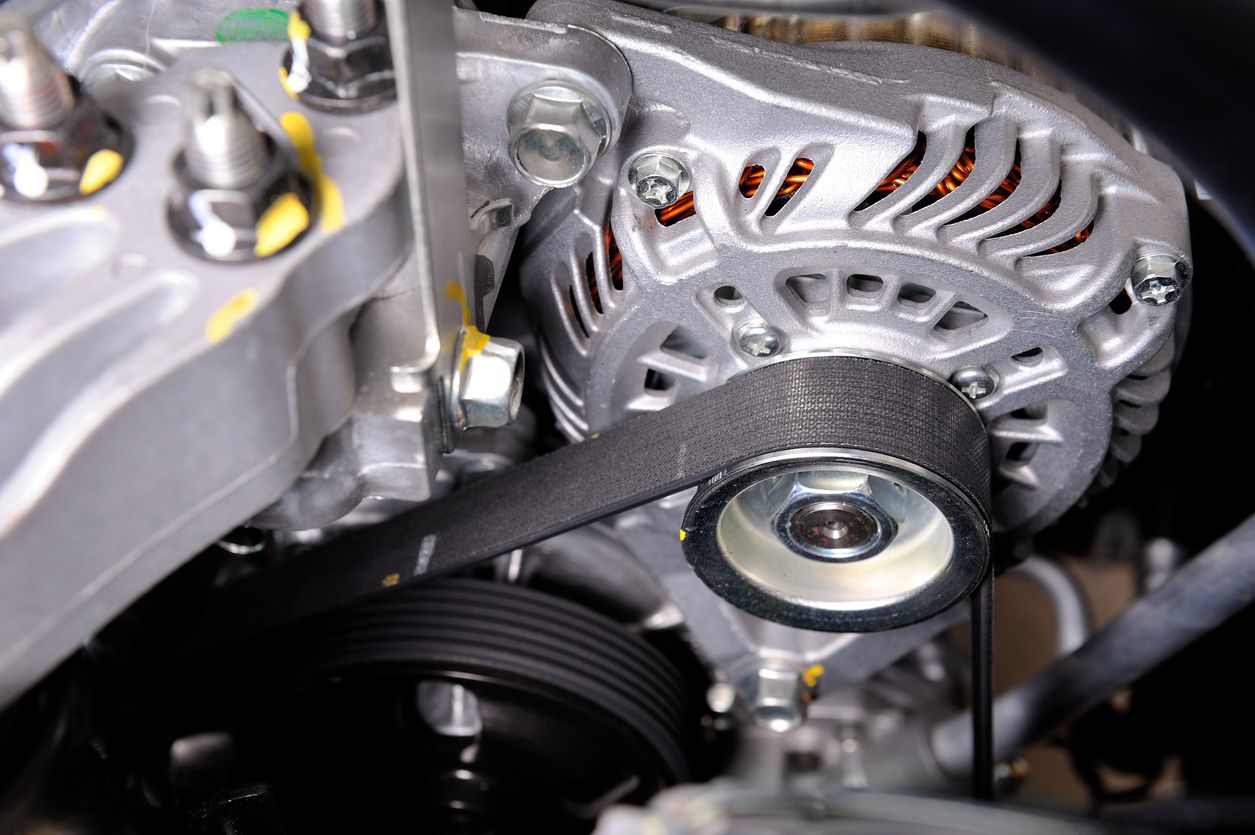You might not pay much attention to your shocks and struts. But when you drive over a pothole or a bump in the road, you'll be glad you have them! Even when the road seems level, no road surface is truly smooth, which is why shocks and struts are important for maintaining control and a smooth ride.
While “shocks” and “struts” are often used interchangeably, they are separate components with different functions. Learn the differences between shocks and struts and when it might be time to get them serviced.
What’s the Difference Between Shocks and Struts?
Are shocks and struts the same thing? While they are both parts of your vehicle's suspension system, each one has a very specific job.
What are Shocks?
Shock absorbers are hydraulic components that help minimize movement generated by the vehicle’s springs. These springs absorb some of the jolts you might feel from uneven or damaged roads. By softening the impact from rough roads and rocky terrain, shocks can help you maintain better control over your vehicle, resulting in a smoother, more comfortable driving experience.
What are Struts?
Struts are structural components of certain vehicles’ steering and suspension systems. They usually consist of a spring and a shock absorber in the same assembly. Struts typically take up less space in conventional suspension systems and are often much stronger than shocks since they are weight-bearing components. Additionally, they help dampen vehicle jolts and improve your vehicle’s steering and alignment.
So, What's the Difference?
While both shocks and struts play a role in your vehicle’s ride and handling, they differ in design and integration within the suspension system. Shocks are standalone components mounted between the frame and suspension, while struts are a structural part of the suspension assembly.
Why Shocks and Struts Are Essential
Shocks and struts are essential components of a vehicle's suspension system. They play a critical role in ensuring safety, comfort, and overall performance. Here's why shocks and struts are so crucial to your ride.
1. Stability and Control
When you're cruising down the road, you want to feel in control. Shocks and struts help keep your vehicle stable, absorbing the bumps and jolts so you can stay firmly planted on the pavement. That means better handling, especially when navigating tight turns or sudden stops.
2. Tire Wear and Traction
Ever notice your tires wearing unevenly? Worn-out shocks and struts could be the culprit. By smoothing out the ride, these components help ensure your tires wear evenly and grip the road better. That means safer driving and potentially longer-lasting tires.
3. Comfortable Cruising
Who doesn't love a smooth ride? Shocks and struts make it happen. They minimize the bumps and vibrations that make your drive less enjoyable, allowing you to cruise in comfort.
4. Handling and Safety
Your vehicle's handling and safety go hand in hand. Shocks and struts play a crucial role here, too. They help you steer with precision, maintain stability in tricky situations, and stop safely when you need to. Without them, your ride could feel shaky, handling could suffer, and safety could be compromised.
Do All Vehicles Have Struts?
Many vehicles will have shocks on one axle and struts on the other. However, not all vehicles have struts. Depending on its design, your vehicle might use separate springs and shocks in place of struts. If you’re not sure whether your vehicle has shocks or struts, there are a few ways you can find out.
How Do I Know If I Have Shocks or Struts?
Determining whether your vehicle is equipped with shocks or struts can be done in a few different ways:
Check Your Owner's Manual.
The easiest way to find out whether you have shocks or struts or both is by referring to your vehicle's owner's manual. It will typically provide information about the type of suspension system installed in your vehicle.
Look Underneath Your Vehicle.
If your vehicle has shocks, you will likely find them mounted vertically (or close to it) behind the tires. In many cases, shocks will look like a hand pump. Struts, on the other hand, typically look like a coil spring with a shock in the center, but occasionally, the shock is mounted next to the spring. Check both front and rear wheels, as you might have both shocks on one axle and struts on the other.
Let a Technician Take a Look.
If you are unsure whether your vehicle has struts or shocks, ride over to your local Tires Plus and let one of our technicians take a look.
How to Maintain Your Shocks and Struts
Proper suspension system maintenance is essential for optimal performance and longevity.
- Replace worn parts: If you notice any symptoms of worn-out shocks or struts, such as excessive bouncing, uneven tire wear, or nose-diving during braking, have your vehicle inspected by a professional for diagnosis and replacement if needed.
- Follow your manufacturer's suggested maintenance schedule: Adhere to the manufacturer's guidelines for replacement intervals and recommended maintenance.
Does Your Vehicle Need New Shocks or Struts?
Shocks and struts can wear out, especially if you do a lot of off-roading or drive on uneven or rough roads. It is recommended that you have your shocks and struts inspected after 50,000 miles or according to your manufacturer's suggested maintenance schedule. But if you're unsure of the last time you had them inspected, here are a few signs to watch for to know whether it's time to get them looked at:
- Your vehicle sways noticeably when going around turns or changing lanes, making it hard to steer.
- The front end of your car dips down when braking, or the rear end dips down when accelerating.
- Your tires wear or show abnormally flat areas (cupping).
- Excessive vehicle bounce after encountering a road obstruction or bump.
- Steering response is poor, or you hear a noise when turning.
- Reduced control at high speeds.
- Unusual tire wear. Because the tire isn't being held firmly to the road, the tread may wear unevenly.
- You notice fluid leaking around your struts or shocks exterior, which may indicate broken seals.
While there are several telltale signs of shock and strut issues, some can be difficult to identify with confidence. For example, some signs of uneven tread wear can lead you to believe there is an issue with your shocks or struts, but these same symptoms can also point to wheel alignment issues, inflation problems, or a myriad of other conditions. That’s why it’s important to get a professional opinion before “self-diagnosing” your car.
Replacing old or worn-out shocks and struts isn't just beneficial for your vehicle, it can also protect your investment in your tires by reducing unnecessary wear.
So, if you're looking for peace of mind for the road ahead, it's time to schedule an appointment at your local Tires Plus. We’ll inspect your shocks, struts, wheels, and more to diagnose and troubleshoot any issues. Your suspension system will thank you later!
Drive Safely with New Shocks and Struts
Driving on bad shocks or struts isn't just uncomfortable for you in the driver's seat. It can also be dangerous! Geico reports that, among other things, compromised shocks and/or struts can lead to decreased control when driving around corners, diminished braking capacity, and instability following changes in acceleration.
It's best to have your shocks and struts inspected after 50,000 miles or according to your manufacturer's suggested maintenance schedule. Download the Tires Plus app to keep up with your vehicle's routine maintenance, and easily book your next appointment at your local Tires Plus.




